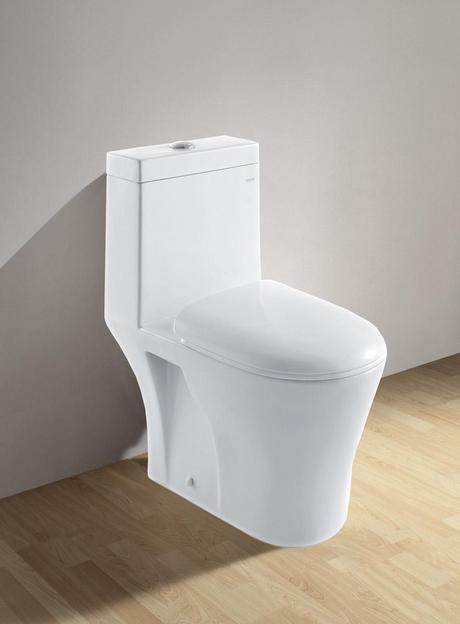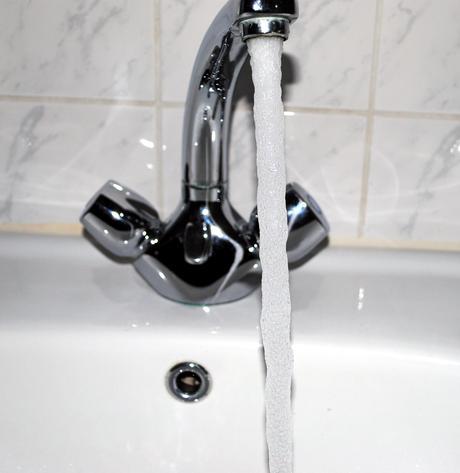Less than 3% of the Earth’s water is freshwater. This makes the threat of water shortages very real to many areas of the country. The entire Southwest region of the United States has been coordinating several large-scale conservation efforts. Some of these have been willing and others have actually been enforced by law. Here’s what you can do to help conserve water in your bathroom!
It’s a proven fact that the largest consumption of residential water occurs in the bathroom. This is because your sink, toilet, and bathroom/shower are all located in this one area. With a typical 4 person family consuming nearly 400 gallons per day, this creates a wonderful opportunity to save water, time, and money all at the same time. Here are some great ideas to help you start conserving water in your bathroom!

Image courtesy Wikimedia.
Quick Tips that Will Save You Water, Time, & Money!
The Toilet
Let’s start with the biggest offender of all; the toilet! The Environmental Protection Agency estimates that 27% of residential water usage comes from the toilet alone! Talk about a lot of flushing! We aren’t going to ask you to hold it longer, but we will give you these simple and effective tips to cut down on toilet water usage!
Installing an ultra-low flush toilet will show a tremendous impact on water usage! Prior to 1980, the average toilet used anywhere from 5-7 GPF. This average took huge strides in 1994 when the Energy Policy Act went into effect. Federal law mandated all residential units to install low flush toilets that consume no more than 1.6 GPF.

The Diana Dual Flush Toilet. Learn More.
The money you spend on an efficient toilet will be returned to you when you help reduce your water bill by as much as 13%! Get excited!
If you don’t have the money to purchase a new low flush toilet, we have a free trick that will be capable of lowering your toilet’s GPF rate! Displace water by putting a plastic bottle in your tank. Simply fill a ½ gallon bottle with water, lower it into your tank, and replace the tank lid. When you flush, your toilet will now save about ½ gallon per flush!
It is important to note that you should not use bricks to displace water because they will disintegrate and get under the rubber flapper. This will cause costly leaks in your bowl!
Tip: We are all guilty of this. Don’t flush small things like hair, trash, and dirt. Not only can it cause your toilet to become clogged, it is an incredible waste of our Earth’s precious resources!
Shower/Bathtub
While toilets consume the largest portion of your water bill, 18% of your total water usage comes from your shower and bathtub. As you can imagine, showers require less water than a bathtub which takes nearly 40-50 gallons to fill.
Conserve water by taking 5 minute showers instead of bathing! Installing a low-flow showerhead will also work wonders by saving you money on your monthly water bill. Old showerheads use 5 GPM compared to newer head that only consume 2.5 GPM. Time for an up-grade!
Other ways you can conserve water in your restroom include changing the way you shower! Turn off the water when you lather your body. Only run water to wet and rinse your body. This will reduce the amount of water that goes down the drain unused! If you must bathe, try only filling 1/3 of your tub. This will allow you enough water to wet and rinse your body while saving nearly 30 gallons!
Sink
The sink is a place where we love to watch water run down the drain. Installing a 1 GPM faucet aerator will help you save water without even noticing a difference.

A faucet aerator makes your water come out like this. Image courtesy Wikimedia
Faucet Aerators separate water into tiny streams of water. When this happens, air is introduced and the amount of water flowing through the faucet is reduced. Often times, this can actually increase water pressure. Improving performance and efficiency makes these screw on upgrades a no-brainer!
Changing our habits at the sink will also prove beneficial to conservation efforts. Start by turning off the water when you’re not using it! This includes while you are washing your face, lathering hands, or brushing your teeth. These changes in your daily routine will have you conserving water in no time!
Sources Found Online
- http://www.moen.com/bathroom/design-planning/design-advice/article?id=573&tab=3
- http://www.homedepot.ca/eco-options/blog/water/high-efficiency-bathroom-fixtures-save-more-than-just-water
- http://environment.nationalgeographic.com/environment/green-guide/bathroom-revamp/
- http://www.hgtv.com/home-improvement/saving-water/index.html
- https://bouldercolorado.gov/water/residential-water-and-energy-conservation
- http://www.london.ca/d.aspx?s=/Water/Water_Conservation/Conservation_House/Element_1.htm
- http://www.sscwd.org/tips.html
- http://www.thisland.illinois.edu/57ways/57ways_57.html
- http://www.turlock.ca.us/citydepartments/municipalservices/gogreen/waterconservation.asp
- http://www.ecofabulous.com/green-building/how-to-conserve-water-in-the-bathroom/
- http://www.south-staffs-water.co.uk/your_home/indoor_water_saving_tips.asp
- http://www.denverwater.org/Conservation/TipsTools/Indoor/
- http://www.wikihow.com/Save-Water
- http://greenliving.about.com/od/greenathome/tp/green-bathroom-water-energy-saving-tips.htm
- http://www.ca.kohler.com/planning/detail.jsp?aid=1171061485254§ion=3&nsection=3&nsubsection=3&nitem=1
- http://www.wsscwater.com/home/jsp/content/conserv-tips.faces
- http://www.savingwater.org/inside_bathroom.htm
- http://www.extension.umn.edu/distribution/naturalresources/components/dd6946r.html
- http://wateruseitwisely.com/blog/articles/5-tips-to-conserve-water-in-the-bathroom-throughout-the-new-year
- http://www.conservewater.utah.gov/IndoorUse/Bathroom/
About this Post
Cheryl Khan is an interior designer and freelancer who loves reading about new green products. She believes that consumers need to become “Smart Buyers” who stop to think about their purchasing decisions!
